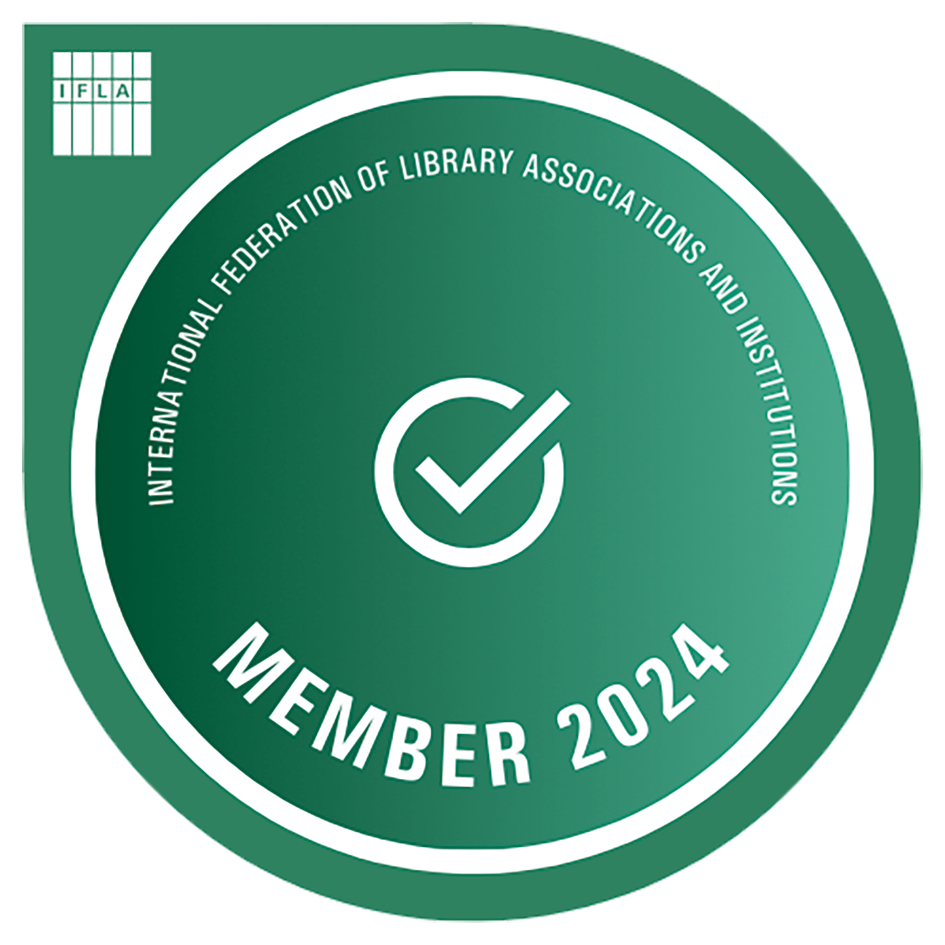The History of National Central Library
In 1912, the Provisional Government of the Republic of China was established in Nanjing. The Ministry of Education’s Department of Social Education was responsible for overseeing the operations of libraries. At the time, the Ministry of Education already had the idea to build a national library. In 1928, the University Yuan held a meeting on national education, during which it was decided to build a central library in Nanjing to be both the highest repository in the nation for scholarship and culture as well as a model for all regional libraries. On January 21, 1933, the Ministry of Education sent Fu-tsung Chiang to serve as a committee member of the National Library Preparation Committee. In March, the Ministry of Education ratified the seven articles comprising the Organizational Outline of the National Central Library Preparatory Office. This is the Library’s earliest organizational regulations. On April 21, an office was rented in Nanjing’s Shatangyuan.
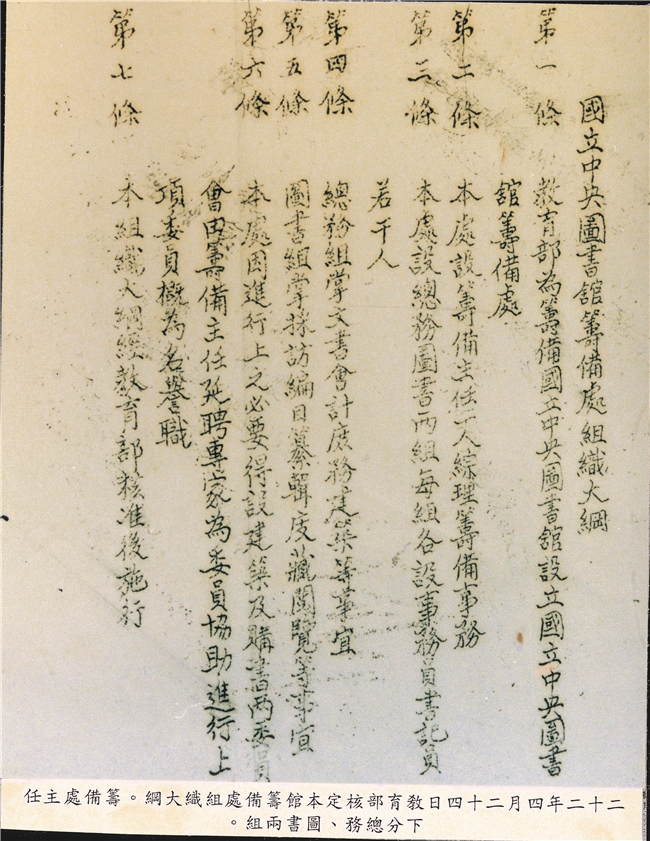
The Organizational Outline of the National Central Library Preparatory Office ratified by the Ministry of Education
After it was first established, its holdings grew by sending letters to government offices seeking their publications. It also carried out the Publication Law to collect new books published throughout the country. In July 1934, it took over the operation of the Ministry of Education’s International Publication Exchange Office and solicited publications from different government organizations. It also collaborated with the Commercial Press to print Siku quanshu zhenben chuji (An Initial Collection of Rare Books from the Complete Library of the Four Treasuries). These two sources were used to exchange publications with international institutions and thus acquire important Western reference works. On February 10, 1936, the library was moved to Chenghsien Street in Nanjing. In September, it was opened to the public. In 1937, a construction committee was formed to draft the rules by which possible blueprints would be solicited and selected. The committee collected submitted blueprints but had not yet reviewed them when the project was suspended due to the war.
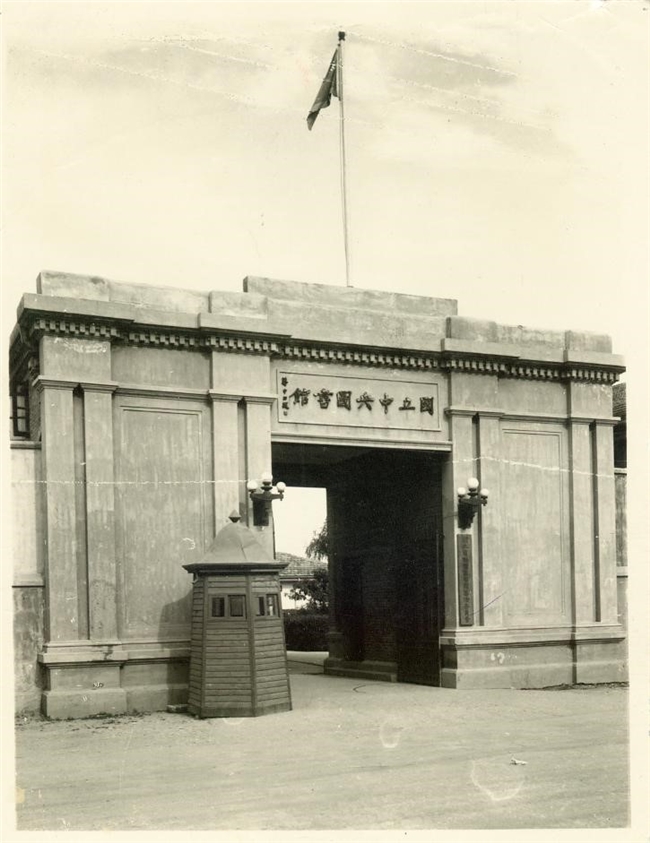
The front gate of National Central Library at Chenghsien Street
On August 15, 1937, Japanese troops conducted an air raid on Nanjing. Because of this, library services were stopped and important books were boxed up into 263 crates. These were transported to a newly-built and secret repository in the Chaotian Palace for the National Palace Museum. The preparatory office moved to 32-2 Gaomenlou, Central Road. On November 18, a sudden directive from the Ministry of Education came to move the collection west. Only 130 crates of important works were able to be prepared, most of which were western works due to the difficulty of replacing them. These were moved to the southwest of China via a long and circuitous route. On February 12, 1938, they arrived in Chongqing. After it was learned that the Nationalist government was relocating to Chingqing, a request was submitted to the Ministry of Education to begin operations there. This request was approved and a two-story building in Juxingcun near the Shangqing Temple was secured. In August of the same year, the Ministry of Education approved preparations for a branch library in Chingqing and organized a committee to oversee construction.
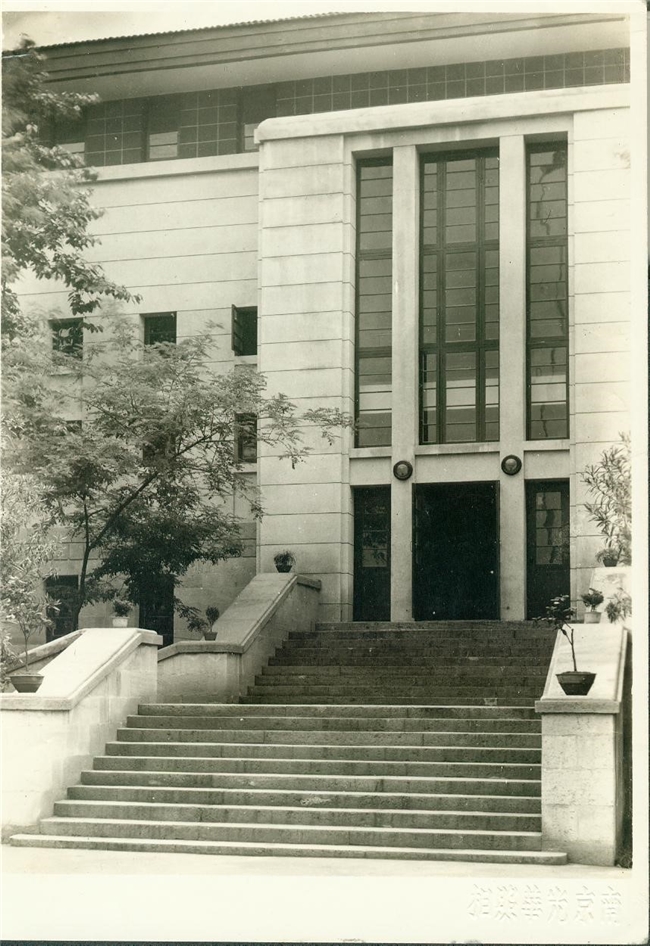
National Central Library facilities during the Chongqing period
In March 1939, due to frequent attacks by the Japanese air force, the directive came to evacuate. The Library was relocated to the Baisha Township in Jiangjin County. In July 1940, the preparatory work came to a close and National Central Library was officially established. On July 20, the Ministry of Education assigned Fu-tsung Chiang to serve as the acting director-general of the Library. On October 16, the Nationalist government officially announced the National Central Library Organizational Regulations, which numbered 13 in all. This was the beginning of official legal basis for the Library.
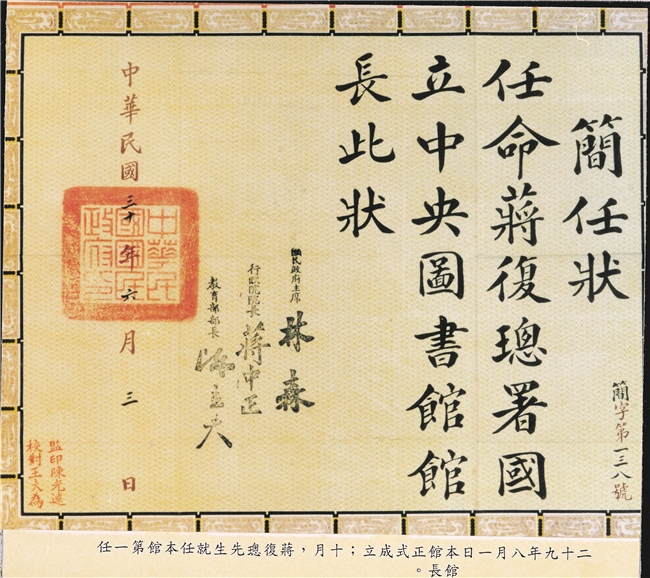
Fu-tsung Chiang was the first director-general of the Library
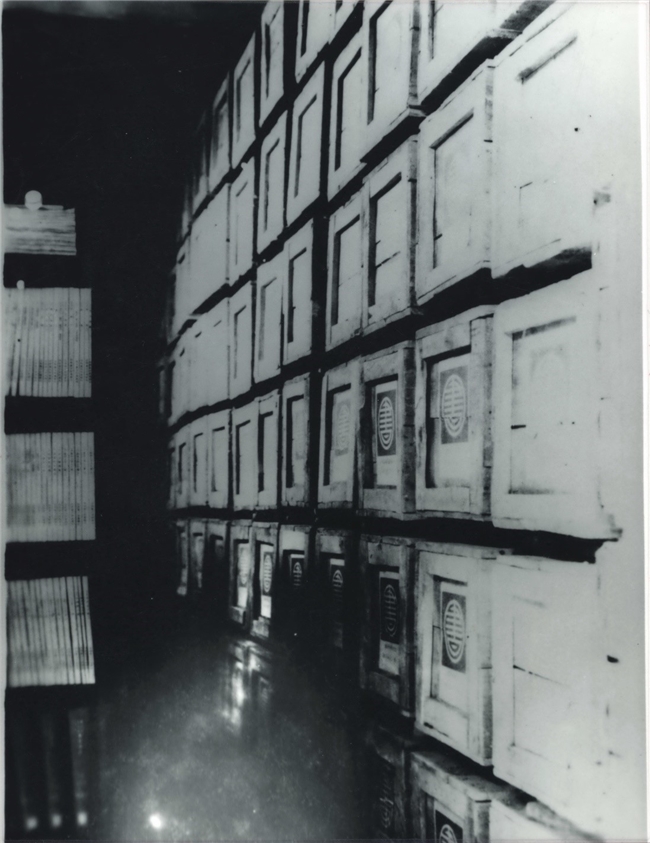
A look at the rare book storage room in Wufeng, Taichung
In August 1954, the Ministry of Education instructed Director-general Fu-tsung Chiang to make preparations to reorganize the Library. In September, the order came to reorganize it. From this point on, National Central Library was no longer a part of the Museum and Library United Management Department in Taichung. Once the Library was back in its own facilities, the books and items stored in the United Management Department’s storage room were relocated to the Library. In October, Director-general Chiang was reinstated. Library operations were first directed from an office in the auditorium of the National Taiwan University Hospital, which was next to the Ministry of Education. On September 19, 1955, offices were moved to 29 Nanhai Road, where there was a botanical garden. Previously, this was where the Taiwan Province Education Hall has housed its Taiwan Mandarin Promotion Committee, as well as the location of the Kenkō Shrine during the Japanese-occupation period. On March 1, 1956, the Library was officially opened to the public. In 1960, renovations were done on the facilities to make them larger. Work was completed in 1965.
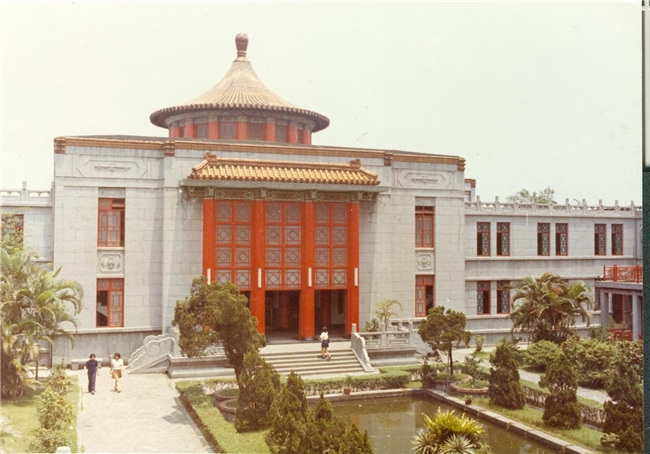
Library facilities at Nanhai Road
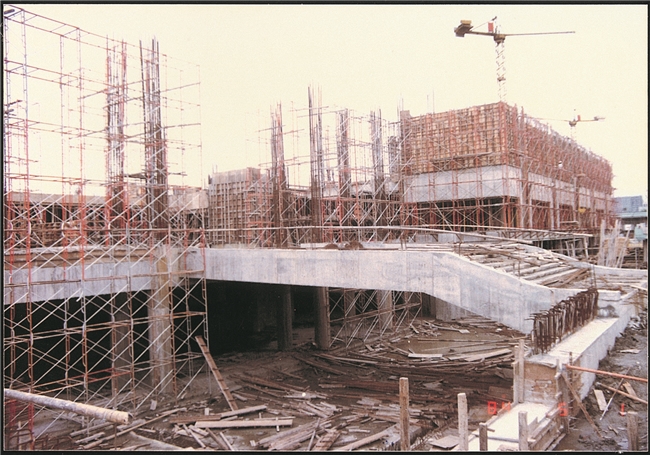
A look at the facilities being built on Zhongshan South Road
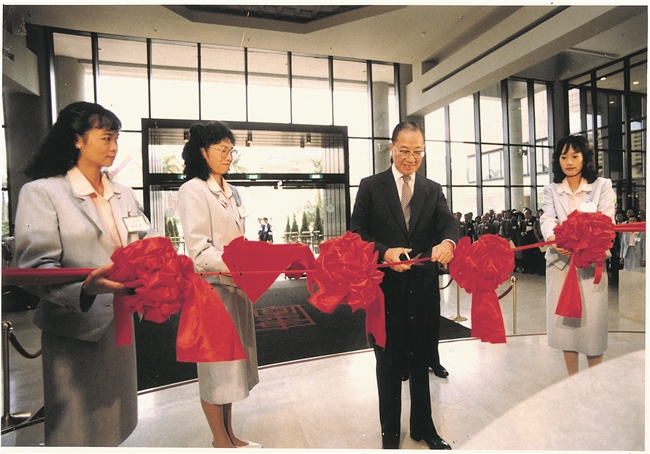
The opening ceremony at the new facility located on Zhongshan South Road; Premier Yu Kuo-hwa was asked to cut the ribbon.
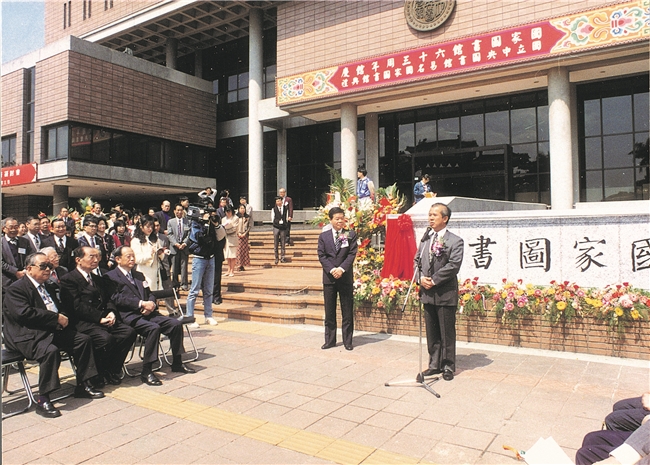
Deputy Director of the Ministry of Education Yang Kuo-tsi presided over the renaming ceremony and unveiled the new change
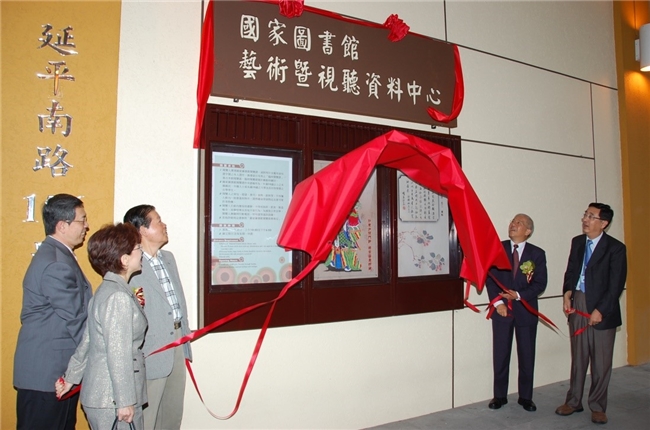
The Art and Audiovisual Center was unveiled by the Minister of Education Cheng Rui-cheng
On December 31, 2010, Director-general Ku reached the age of mandatory retirement. His post was assigned to Shu-hsien Tseng, former Director of the Taipei Public Library and professor of the Department of Library and Information Science at Fu Jen Catholic University. On February 3, 2012, the president of Taiwan announced the National Central Library Organizational Regulations, comprised of six regulations. On January 1, 2013, in conjunction with the reorganization of the Executive Yuan, the original nine divisions were consolidated into six (the Librarianship Development Division, Collection Development and Bibliography Management Division, Knowledge Services Division, Special Collections Division, Digital Knowledge Systems Division, and International Cooperation Division), the Center for Chinese Studies (comprised of the Liaison Division and Materials Division), the ISBN Center, and the Bibliographic Information Center that is operating as a task force. In April, the Library’s 80th anniversary celebration was held with an accompanying series of events. In April 2015, the Digital Center was established. On January 12, 2017, the Executive Yuan issued a letter instructing the Ministry of Education to establish a branch of National Central Library in southern Taiwan. The Tainan City government was quickly notified so that they could help with the planning and construction project. On February 14, Premier Chuan Lin visited the designated site for the southern branch.
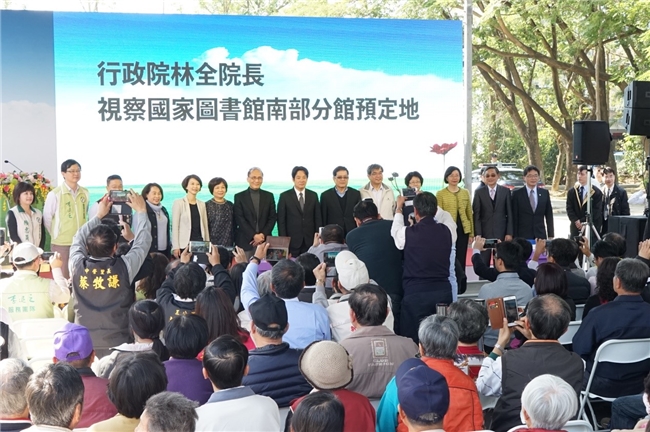
Premier Chuan Lin inspects the site for the southern branch of National Central Library
On December 28, 2017, the “Southern Branch of the National Central Library and National Repository Library Construction Project” was approved by the Executive Yuan. All subprojects started in January 2018. The results of the design competition were announced on August 30, 2018. Bio-architecture Formosana won first prize with the design concept of “A Library as a Town” Construction of this new facility will extend NCL’s function and service to the south. It’ll also enable NCL to better meet the needs of southern patrons about reading, as well as public libraries about repositories. 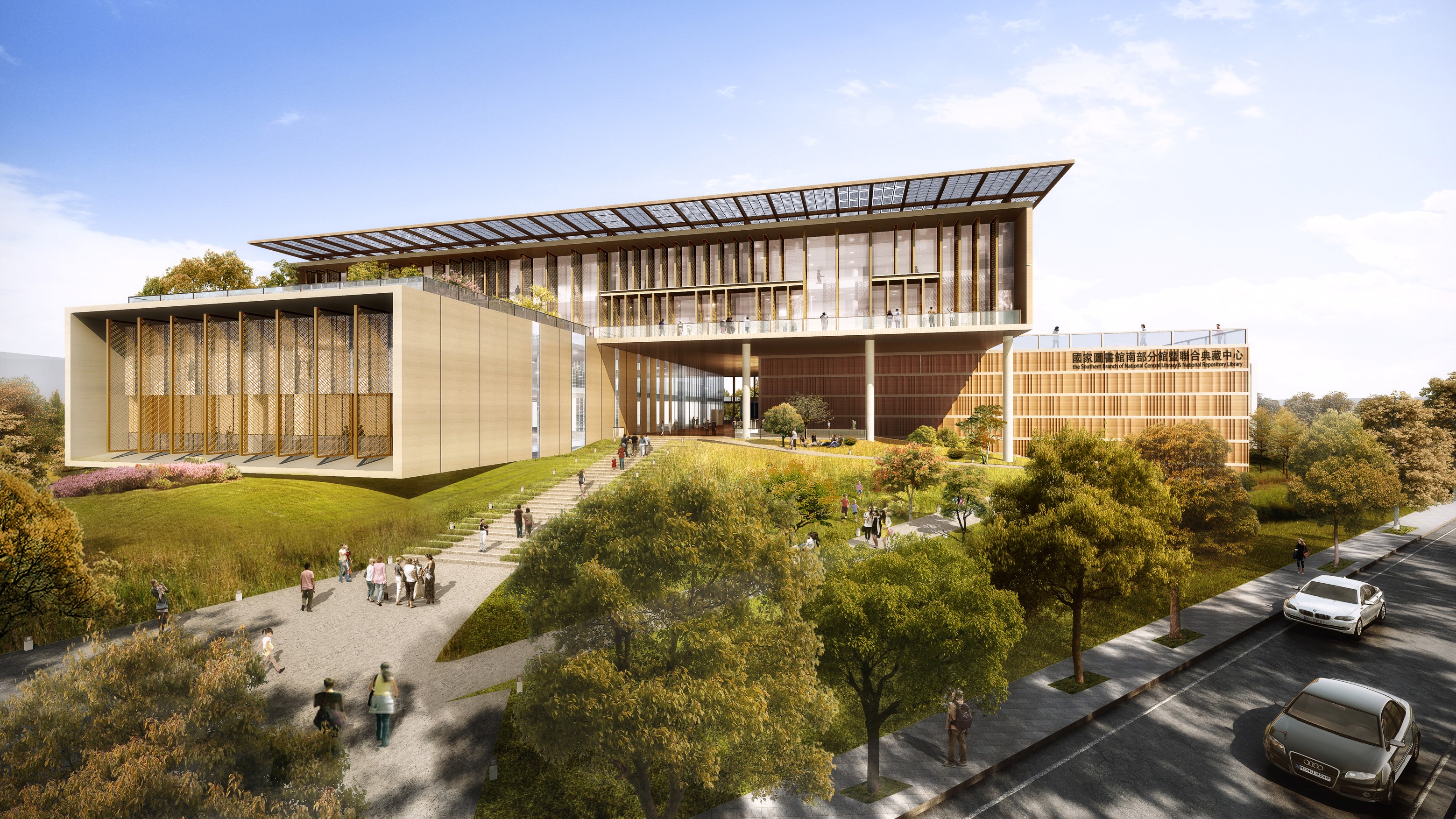
Bio-architecture Formosana won first prize with the design concept of A Library as a Town
On January 25, 2022, the materials and services at the National Central Library's Information and Computing Library (located on the 13th floor of the Science & Technology Building) were relocated back to NCL. These were no longer provided at the ICL. This was done to accord with policies from the Ministry of Education and in response to overall changes of the times. Doing so will also make it more convenient for patrons to access these. 
Resources and services at National Central Library's Information and Computing Library will be provided by NCL as of January 25, 2022
National Central Library's Arts and Audiovisual Center, located on Yanping South Road, exchanged premises with the Executive Yuan’s Environmental Protection Administration on the 14th floor of 4 Xiushan Street. Consequently, reader services stopped on June 30, 2022. The new location was transformed into the Open Lab Multimedia Center. It began operation on November 19, 2022. 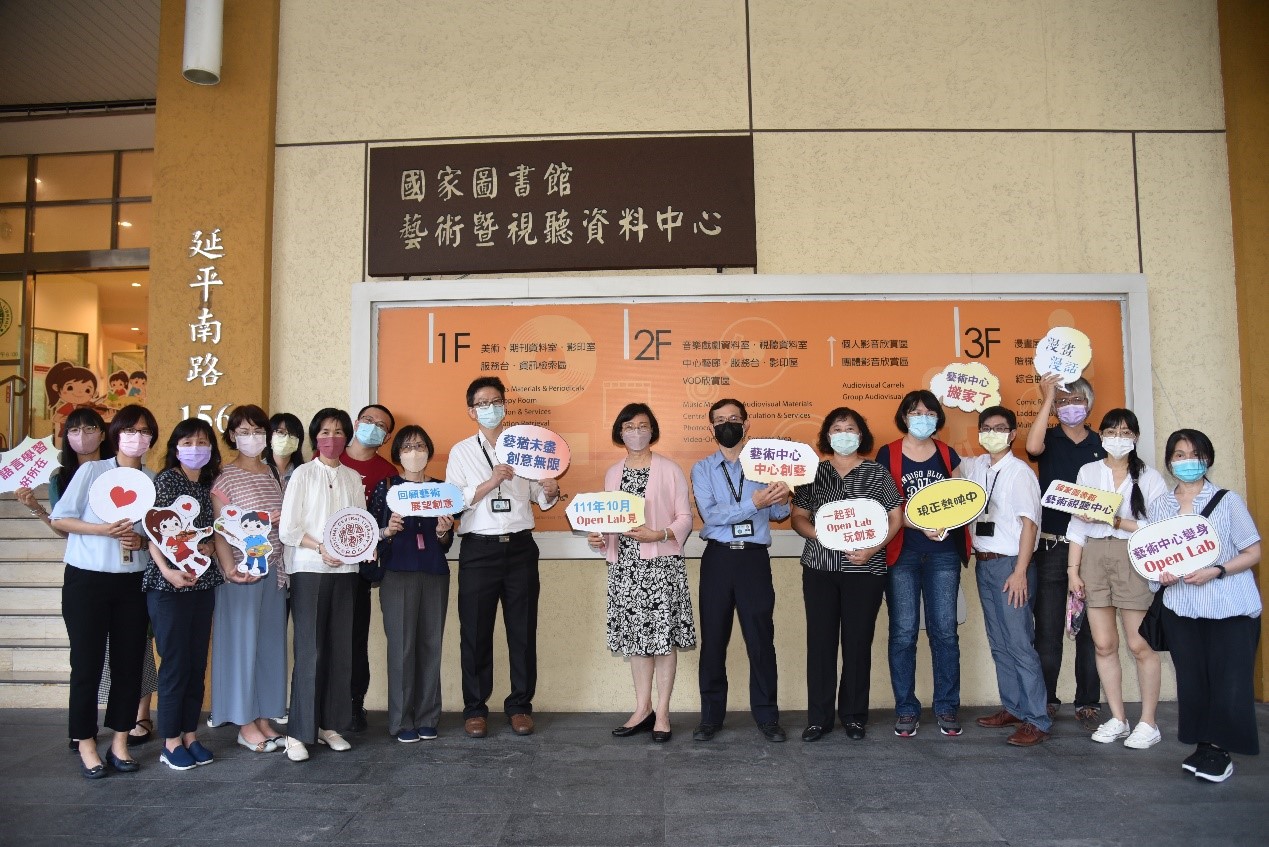
Director-General Shu-hsien Tseng touring the Arts and Audiovisual Center with the staff
On September 5, 2022, the groundbreaking ceremony for the new construction project had a number of dignitaries in attendance, including Secretary-General of the Executive Yuan Meng-yen Li, Minster of Education Wen-chung Pan, Tainan Mayor Wei-cher Huang, the main architect of the project Ms. Ching-hwa Chang, Formosa Builders Board Chair Pei-hung Kuo, and many government representatives and local residents. All got to move some dirt with a shovel, symbolizing the beginning of the project. Construction is scheduled to be completed in December 2025. After the ceremony, NCL Director-General Shu-hsien Tseng presented the first group of volunteers for the Southern Branch of the National Central Library & National Repository Library with certificates. This coalescing of local help in assisting with the construction project and in promoting library services is a new innovation in Taiwan’s construction industry. 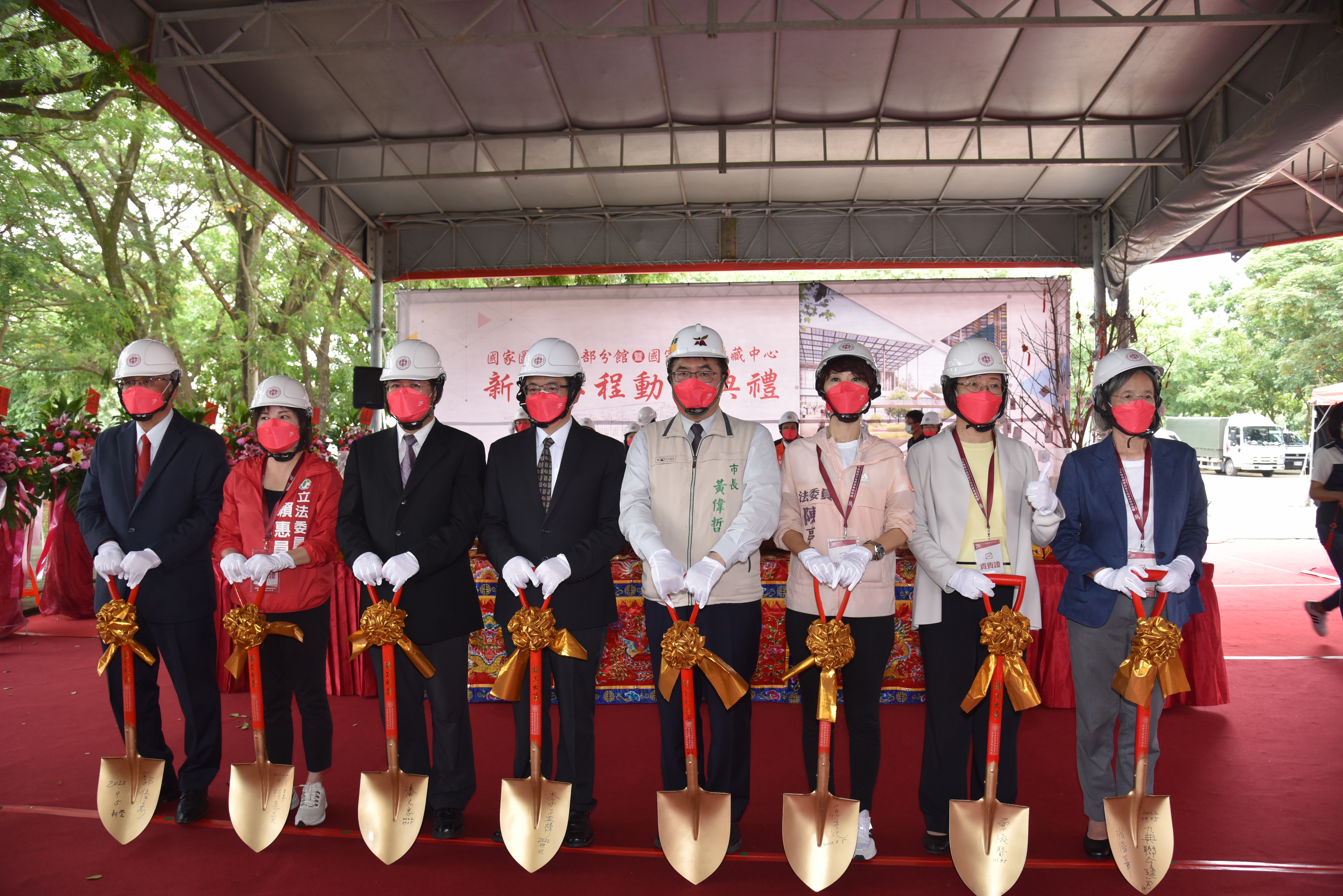
A group photo at the groundbreaking ceremony for the Southern Branch of the National Central Library & National Repository Library; participating where Secretary-General Meng-yan Lee and Education Ministry Wen-chung Pan, among others.
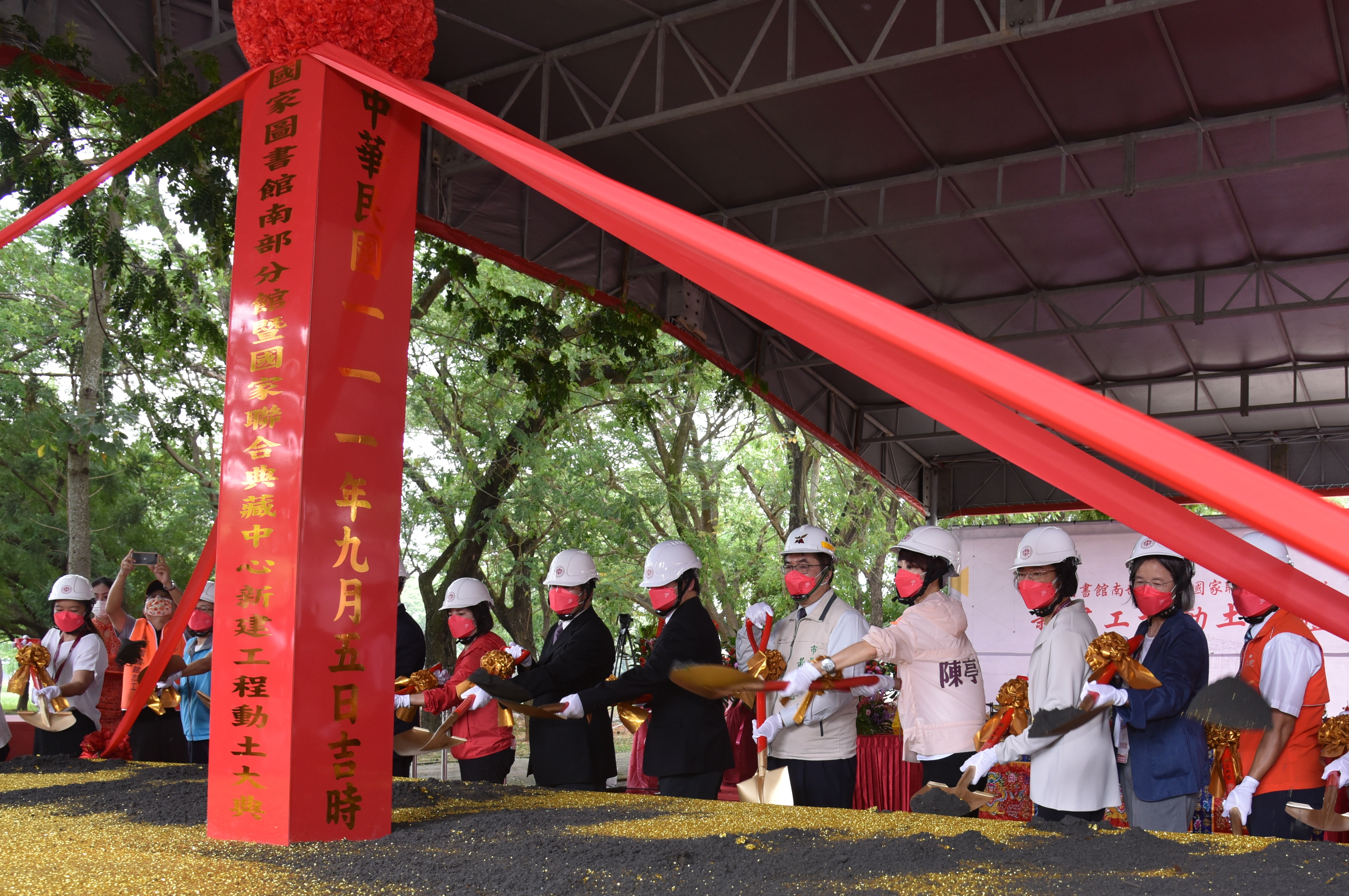
A shot of the groundbreaking ceremony for the Southern Branch of the National Central Library & National Repository Library
On November 19, 2022, Open Lab was officially opened. In addition to reading and other common library elements, it also brings together a variety of technology, was developed on the concept of library services for a new age, offers innovative service content, and creates a place to explore, learn, experience, interact, and share. It is a multidisciplinary, digital-friendly, and youthful open-access lab. That is why it was named Open Lab.
Open Lab provides the following innovative services and equipment: its Exploration & Experience services include IT Maker, animation creation, DIY studio, carpenter studio and laser machine, and other equipment. Creation & Inspiration services provide individual/family live broadcast rooms, live studios, rehearsal rooms, music studio, and other multimedia equipment. Empower Learning services provide a Traveler Reading Area, an Audiovisual Area, Language Learning Area, Comics Area, Book Creation Area, and other types of books. The Sharing and Communication services include multifunction rooms, group rooms, a learning commons, and an exhibition commons—all great areas to share ideas and creative productions. 
The Open Lab Multimedia Center during its opening ceremony

Comics at the Open Labs
On January 16, 2024, Director-general Shu-hsien Tseng concluded her term of office upon reaching the mandatory retirement age. Dr. Han-Ching Wang, who serves as the University Librarian of the National Cheng Kung University Library and holds the distinguished professorship in the Department of Biotechnology and Bioindustry Sciences, assumed the position of director-general on February 1.
- Resources
- NEWS & Events
- ABOUT NCL
- International Cooperation and Exchange
- Services






